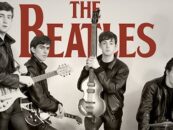 Stepping off the Santa Monica Civic Auditorium stage on July 5, 1974, Walter Becker and Donald Fagen closed the books on Steely Dan as a live band. An earlier tour had left both exhausted and Fagen’s voice shredded, prompting an epiphany about the road’s toll on their physical and mental health. “We made the decision to hang up our high-heeled sneakers and, at least for the time being, come off the road,” Fagen wrote decades later.
Stepping off the Santa Monica Civic Auditorium stage on July 5, 1974, Walter Becker and Donald Fagen closed the books on Steely Dan as a live band. An earlier tour had left both exhausted and Fagen’s voice shredded, prompting an epiphany about the road’s toll on their physical and mental health. “We made the decision to hang up our high-heeled sneakers and, at least for the time being, come off the road,” Fagen wrote decades later.
Songwriters first, Becker and Fagen had formed Steely Dan as a vehicle for knotty, sophisticated songs that had eluded covers by other artists. Together with producer Gary Katz, whose acceptance of his A&R gig at ABC/Dunhill Records was conditional on a publishing deal for the duo, they assembled a solid ensemble to record and tour behind their songs, scoring two hit singles and a top 20 album with their debut, 1972’s Can’t Buy a Thrill.
Two years later, their third album, Pretzel Logic, enjoyed another commercial peak that cracked the album chart’s top 10, thanks to its seductive single hit, “Rikki Don’t Lose That Number.” For the ’74 tour, the lineup expanded with second drummer Jeff Porcaro, a 20-year-old powerhouse, and keyboard player and backing vocalist Michael McDonald, recommended by Porcaro. Years later, Fagen would admit dissolving the group wasn’t entirely without regret “because the band was sounding pretty good.”
Still, their exit plan prevailed, becoming official with the Santa Monica gig that would be the last Steely Dan concert for 19 years. With no manager to hector them into reconsidering the retirement from live shows, their studio ambitions were further kindled by Pretzel Logic’s success, which prompted label president Jay Lasker to greenlight a bigger budget for the next full-length. [Our Album Rewind of Pretzel Logic.]
Back in Los Angeles, Gary Katz finagled an unused office at ABC/Dunhill’s office complex on Beverly Boulevard, giving Becker and Fagen a writing room within walking distance of the studio, where they soon settled into Studio A. The three previous Dan albums had been recorded primarily at Village Recorders in West Los Angeles, but apart from its proximity to the duo’s songwriting bolthole, Studio A boasted a new Bösendorfer concert grand piano that would figure into their keyboard needs.
Together with producer Katz and engineer Roger Nichols, Becker and Fagen shared audiophile benchmarks. Can’t Buy a Thrill, Steely Dan’s debut, presented the initial six-piece ensemble with cutting-edge clarity and an open soundstage, establishing a high bar that would evolve on subsequent LPs. As they settled into production, they bypassed the control room’s standard playback monitors and power amps by bringing in Magneplanar flat-panel speakers, driven by bespoke Audio Research D76 tube amplifiers. They also opted to sidestep industry standard Dolby noise reduction in favor of DBX’s new rival system. “We were ready to make high fidelity our bitch,” Fagen recalled.
Assembling what would become Katy Lied, Becker and Fagen enlisted a skeleton crew of alumni from the final touring lineup, starting with guitarist Denny Dias, whose connection to the two songwriters predated Steely Dan when Becker and Fagen answered Dias’ ad in the Village Voice seeking a bass player and keyboard “with jazz chops.” Jeff Porcaro and Michael McDonald would also feature in the instrumental core.
Steely Dan supplemented their regulars with studio players from inception, but Pretzel Logic marked an expansion of the practice, ultimately outnumbering the original quintet with 16 guest musicians. Fagen shared keyboard duties with Michael Omartian and David Paich, both invited back for the new album. Likewise, Becker began a transition from bass to his first love, guitar, by tagging bass guitar A-listers Wilton Felder of the Crusaders and Chuck Rainey, both invited back for the Katy Lied sessions.
Steely Dan’s initial ensemble ticked the rock box with twin lead guitarists Denny Dias and Jeff “Skunk” Baxter. The end to road work prompted Baxter to leave for a new featured slot as a Doobie Brother, so a new array of guitarists was enlisted to alternate with Becker and Dias on solos. Veteran rockers Rick Derringer and Elliott Randall returned as guests, joined by Larry Carlon, Hugh McCracken and Dean Parks to plumb a balance of rock and jazz influences.
Becker’s first Steely Dan guitar solos straddle those two genres confidently on Katy Lied’s opening track, “Black Friday.” Released years before the surge in splashy national retail sales events, the title alludes to the 1869 scandal when robber barons tried to corner the gold market while the lyrics riff on 1929’s stock market crash on “Black Tuesday,” visualizing the “gray men when they dive from the fourteenth floor.” An ominous blues shuffle, the track is powered by the crossfire of two electric pianos injecting a nervous, ostinato pulse.
Becker’s squalling solos unleash fast, fluid volleys bearing the influence of Randy California, a Queens neighbor that a teenaged Becker knew as Randy Wolfe, then playing alongside Jimi Hendrix, who gave him his stage name when they were in Jimmy James and the Blue Flames. Released as Becker and Fagen’s pick for the lead single, “Black Friday” stalled out in the lower rungs of that chart target. “Thereafter, we left the single business to the record company,” Fagen would write.
The album then downshifts to the melancholy lyricism of “Bad Sneakers,” a rueful ballad steeped in homesickness for New York City amid their Californian exile. Dias’ delicate electric sitar figure tees up contrasting memories of the two coasts, “stomping on the avenue by Radio City” before a darker L.A. vision where a “fearsome excavation on Magnolia Boulevard” becomes “a ditch out in the Valley they’re digging just for me,” a pinpoint mapped to where Becker and Fagen were then living.
Becker steps out with a second impressive guitar solo. In contrast to the horizontal fireworks on “Black Friday,” his playing here uncoils vivid melodic leaps steeped in bebop phrasing, punctuated by Porcaro’s low tom-tom strikes. McDonald makes his Dan debut on backing vocals, his earnest, earthy tenor adding a fresh emotional ballast to Fagen’s droll lead.
As they had on their debut and Pretzel Logic, Becker and Fagen hold to the pop discipline they had learned during their Brill Building apprenticeship, with all but one of Katy Lied’s 10 songs clocking in at under four minutes and “Bad Sneakers” trimmed to a Top 40-ready 3:21. Released as the set’s second single, it fared even more poorly than “Black Friday,” failing to crack the top 100 but ultimately surviving as one of Steely Dan’s most evocative ballads, a deep track that has held up handsomely.
“Rose Darling” stays in the pop lane with an erotic encounter variously decoded as adulterous, masturbatory or metaphorical before the album steers back toward the blues. “Daddy Don’t Live in That New York City No More” cruises in a lower gear than “Black Friday,” not least of all because Daddy “don’t drive in that Eldorado no more.” The titular antihero is a petty criminal who’s seen better times, now hobbled by age, bad decisions and impotence. Daddy’s downfall earns a mordant smile through the litany of what he’s lost, with Fagen’s jaunty vocal matched by sly guitar fills and solos from Larry Carlton in his first but hardly last Steely Dan appearance.
The presence of jazz players like Carlton would pique rock critics to sniff at the album’s “cool, cerebral” musicianship, a gripe that says as much about rock’s then monolithic impact on popular music as the quality on hand. At its midpoint, Katy Lied offers a trio of songs that wear Becker and Fagen’s command of jazz’s harmonic palette and instrumental technique proudly. “Doctor Wu” remains one of Steely Dan’s loveliest melodies, mated to lyrics that mingle hints of romantic longing in an opening verse that yields at the album’s title with subsequent images of addiction. Its chorus adopts the second person address that Becker and Fagen often used to shroud meaning:
“Are you with me, Doctor Wu”
Are you really just a shadow
Of the man that I once knew?
Are you crazy, are you high
Or just an ordinary guy…?”
A modulation from the key of G to B flat prompts an upward mood swing before the song settles back into brooding need, “strung out here all night, waiting for the taste you said you’d bring to me.” A powerful alto saxophone solo from Phil Woods, a post-bop veteran, offers its own release before subsiding into a sighing exit.
“Everyone’s Gone to the Movies” flexes jazz flourishes openly, sheathing guitars to rely on keyboards and the glowing accents of Victor Feldman’s vibes. A bright melody, spry tempo and cooing female backing vocals offset lyrics detailing the predations of a pederast enticing his prey with porn.
Taking its title from their sophomore album’s most adventurous track, “Your Gold Teeth II” retains the earlier song’s chorus lyric but otherwise ventures even further from more mainstream pop and rock. A brisk intro of expectant piano chords pivots to a pensive waltz, given restless energy from Jeff Porcaro’s swinging cross-rhythms as Fagen issues a cryptic warning about “children…who scheme and run wild,” with Omartian making good use of the Bösendorfer’s lush timbre. Feldman’s luminous vibraphone accents brighten the mix, with Dias flexing his own jazz chops with a fleet guitar solo.
An English jazz prodigy, Feldman had established a major profile on keyboards, vibes and percussion before emigrating to the U.S. in the ’50s. There he found steady work with major artists, eventually turning down a major gig with Miles Davis in favor of the work-life balance and lucrative session fees from Los Angeles studio sessions. For Becker and Fagen, Feldman would emerge as a studio M.V.P., beginning with the sultry Latin percussion that anchors “Do It Again,” Steely Dan’s freshman radio hit and debut album lead track, going on to appear on all seven of the band’s ABC/MCA studio albums.
“Chain Lightning,” brings the set’s third blues excursion, decelerating further from “Black Friday” and “Daddy Don’t Live…” for a languid stroll offsetting its evocation of a Nazi rally where the singer exhorts us to “get with it” and “be part of the brotherhood.” Rick Derringer’s guitar solo slides and stings, sustaining the track’s prevailing mood of mellow calm in ironic contrast to its message of fascist surrender. The title suggests the Schutzstaffel lightning bolts emblematic of the Waffen SS recycled by neo-Nazis here and abroad ever since.
After plying their deadpan slant fascism, Becker and Fagen surprise with a rare exercise in emotional directness. “Any World (That I’m Welcome To)” is a yearning confession for transcendence and human connection without ironic distance or a trace of sarcasm to dream instead of the freedom to “move to another lifetime” where “folks will have me.” The song lifts hopefully on its choruses, with Michael McDonald’s ardent backing vocals a focal point, driven by Wrecking Crew veteran Hal Blaine on drums, the lone track not featuring Porcaro.
For the album closer, “Throw Back the Little Ones,” Steely Dan eschews rock conventions entirely with music that verges on art-pop in its starts and stops, shifting rhythms, and an intricate horn fanfare arranged by Jimmie Haskell. Tucked between its surreal verses is a self-effacing maxim: “Hot licks and rhetoric/Don’t count much for nothing/Be glad if you can use what you can borrow…”
For all the songcraft and musicianship on display, Katy Lied nearly died on arrival, following a malfunction in the DBX noise reduction system. Engineers at DBX helped repair most of the damage, but Becker and Fagen remained unhappy with the finished record.
Released in March 1975, Katy Lied fared respectably on the album charts, finishing a few rungs below its predecessor. Becker and Fagen’s decision to retreat to their studio laboratory to huddle with first-call studio heroes rather than tread the boards of theaters and arenas drew critical knocks even as their standards helped define a burnished sonic ideal for ’70s and early ’80s pop and rock. McDonald, Porcaro and David Paich would all figure prominently over the next decade in both solo and band contexts destined to be moored in the dubious Yacht Rock harbor retroactively excavated in the early ’00s, with Steely Dan itself christened the faux genre’s flagship, much to Messrs. Becker and Fagen’s disgust.
[Steely Dan’s classic ABC and MCA Records catalog is returning to vinyl with an extensive reissue program of the band’s first seven albums, including Katy Lied, which is being personally overseen by founding member Donald Fagen. They’re available to order in the U.S. here and in the U.K. here.]
Bonus Video: Watch Steely Dan perform “Black Friday” live at their 2001 induction into the Rock and Roll Hall of Fame
- ‘Running on Empty’: Jackson Browne’s Romance of the Road - 12/06/2025
- ‘Slowhand’: Eric Clapton’s 1977 Platinum Balancing Act - 11/25/2025
- Stephen Stills’ A-List Solo Debut Revisited - 11/16/2025







3 Comments so far
Jump into a conversationThe ‘kangaroos’ and ‘Muswellbrook’ references in “Black Friday” always send me back to one of the first movies I can recall seeing, the nuclear world-ender “On the Beach”. Terrific cast.
‘There is still time . . . ‘
Really good article, though that said, “Katy Lied” is probably my least favorite album from The Dan’s ’70s/early ’80s output. THAT said, it’s still a really good album. It only goes to show the high esteem in which I hold all the other albums.
Fagen and Becker had come a long way from their debut at this point, hadn’t they?
‘Can’t Buy a Thrill’ exploded on the scene with memorable freshness while ‘Countdown To Ecstasy’
foretold of the changes to come. ‘Katy Lied’ is a very good album.
By that time, they had honed their craft, and followed their instincts from the well of their
bottomless creativity and the direction in which they would continue on and subsequently more
so when the group name was dropped, with the further titles recorded under as Donald Fagen.